One of the most common fruit rots of tomato, especially in vegetable gardens, is caused by several species of the fungus Colletotrichum. Ripe and overripe fruit are especially susceptible but the pathogen can infect green fruit with symptoms not developing until fruit begin to ripen. Spots on fruit initially are small, circular, and depressed. They can enlarge considerably over time, and may develop concentric rings. The center of anthracnose spots become dark as the fungus produces spore-containing structures (microsclerotia and acervuli).
Masses of pink to orange colored spores are released from these structures when weather is wet or humid. These spores are dispersed to other fruit by splashing water. Eventually the entire fruit will rot, especially when there are several anthracnose spots or decay organisms enter the diseased tissue. Fruit nearest to the ground are most likely to be affected. The fungus can also infect roots.
Manage anthracnose by controlling sources of the pathogen, minimizing the opportunity for dispersal of the pathogen, reducing favorability of environmental conditions for disease development, and applying fungicides. There are two slicer-type resistant tomato varieties: Chef’s Choice (red and orange).
The spore-containing structures provide a means for the causal fungus to survive between crops. Consequently, important practices for managing anthracnose include rotating where tomatoes are grown. Not growing tomatoes or other solanaceous plants (especially potato) in the same area for 3 to 4 years is ideal. A practice that can be implemented in a small garden is removing affected fruit rather than letting them drop to the ground.
The pathogen can also be seed-borne, Therefore seed should not be saved from diseased fruit.
Covering the ground with black plastic mulch, straw, or other material provides a barrier between the pathogen in the soil and fruit. Trellising plants increases the distance between the fungus in the soil and fruit, plus air circulation will be improved enabling plant tissue to dry more quickly.
Many fungal pathogens need plant tissue to be wet in order to infect. Practices to minimize the length of time that fruit will be wet from rain or dew include trellising, locating tomatoes where there is good air movement and no shade, and orienting rows parallel to the predominant wind direction. Providing water to the base of plants rather than using a sprinkler not only avoids wetting fruit, but avoids the opportunity for splash dispersal of the pathogen.
Pick fruit as soon as it is ripe to minimize the time for anthracnose to develop, but note that development of symptoms is not completely prevented by taking fruit from plants to drier, protected, indoor conditions.
Fungicide applications are recommended starting at first fruit set and are most important as fruit ripens.
- Organic fungicides labeled for anthracnose include copper and several biopesticides: Carb-O-Nator, Ecoworks EC, GreenFurrow EF 400, Howler, Lalstop G46, MilStop, Mycostop, Oso, OxiDate 2, PerCarb, Rango, Serenade, Serifel, TerraNeem, Timorex Act, and Trilogy. See the Biopesticides website for information about these products.
- Targeted fungicides labeled for anthracnose in commercial crops of tomato and other fruiting vegetables include Aprovia Top (FRAC 3 + 7), Inspire Super (3 + 9), Mettle (3), Ariston (27), Cabrio (11), Flint Extra (11), Quadris (11), Quadris Top (3+11), and Tanos (11+27). PHI is 3 days for Ariston, Flint Extra, and Tanos; 0 days for others. As with all diseases, apply targeted fungicides in alternation based on their FRAC code. Contact, protectant fungicides with chlorothalonil, copper and mancozeb are also labeled and recommended used with targeted fungicides.
Summary on managing anthracnose in the garden: Don’t save seed from fruit in a planting where anthracnose occurred. Don’t plant tomatoes where you did the previous year, at least 2 years best. Plant where tomatoes will receive full sun; no shade from trees, etc. as this will increase humidity. Trellise plants so fruit are far from soil and plants will dry more quickly after rain. Cover soil surface with straw, grass clippings, or plastic mulch. Space plants well to minimize humidity. Water base of plants rather than using sprinkler system that causes splashing water on fruit. Many pathogens thrive when watering is done in early morning such that the period of time leaves and fruit are wet is extended. And watering in early morning can cause pathogens to be splashed dispersed to healthy plant tissue. Many pathogens produce spores over night when it is dark and humidity is high. Remove any volunteer tomato seedlings. Promptly harvest ripe fruit. Note that symptoms of anthracnose can develop as fruit sits after harvest, so use promptly. Remove from the garden any fruit that rot. Do not compost fruit tissue with anthracnose.
(updated September 2022)
Please Note: Fungicides mentioned are for use in commercial production, not gardens. The specific directions on pesticide labels must be adhered to — they supersede these recommendations if there is a conflict. Any reference to commercial products, trade or brand names, is for information only; no endorsement is intended. For up-to-date information on labeled conventional fungicides see Cornell Integrated Crop and Pest Management Guidelines for Commercial Vegetable Production and biopesticides see the Biopesticides website.
Symptoms developed on fruit in following two photographs a few days after harvest while in a house.



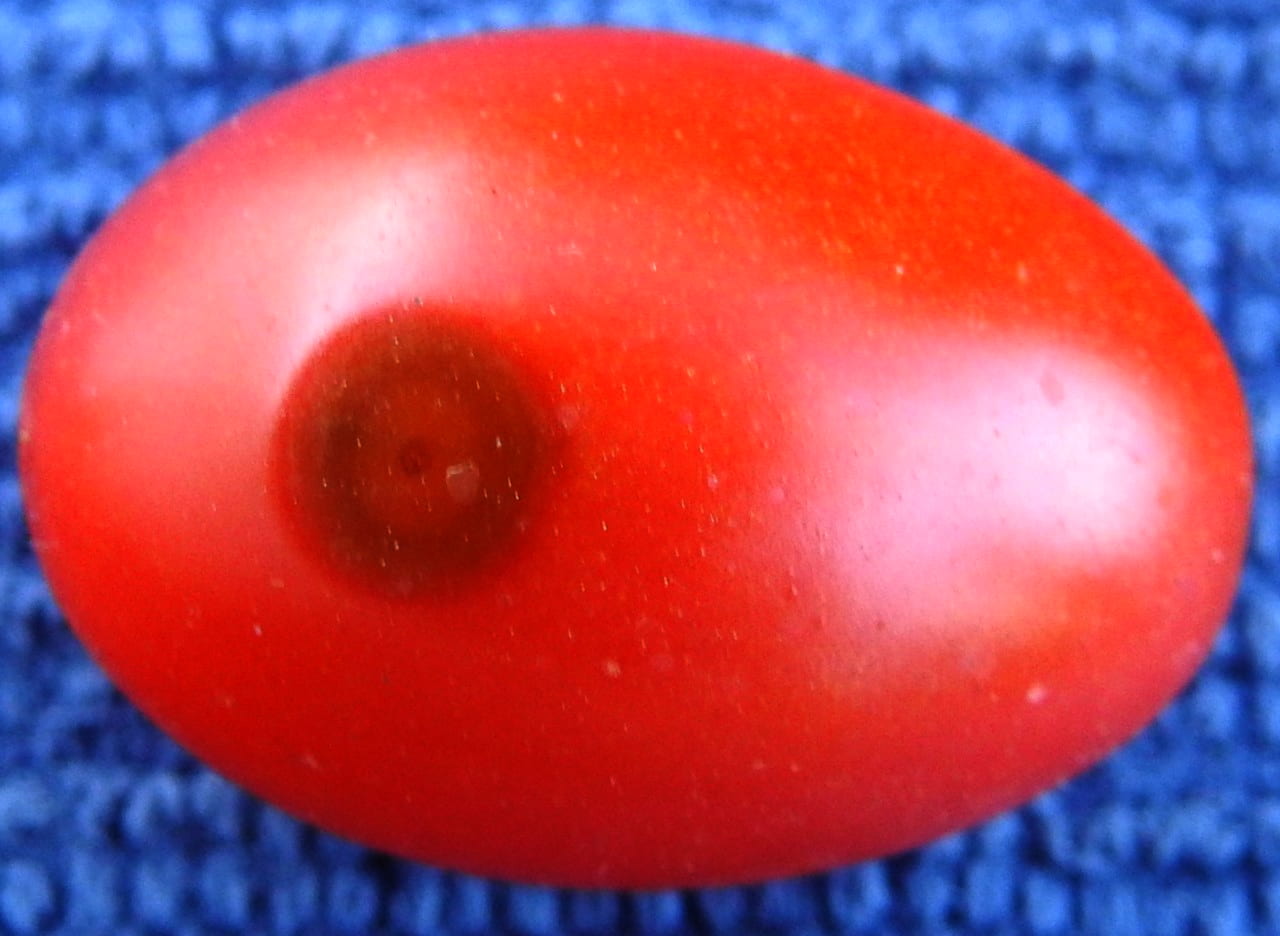
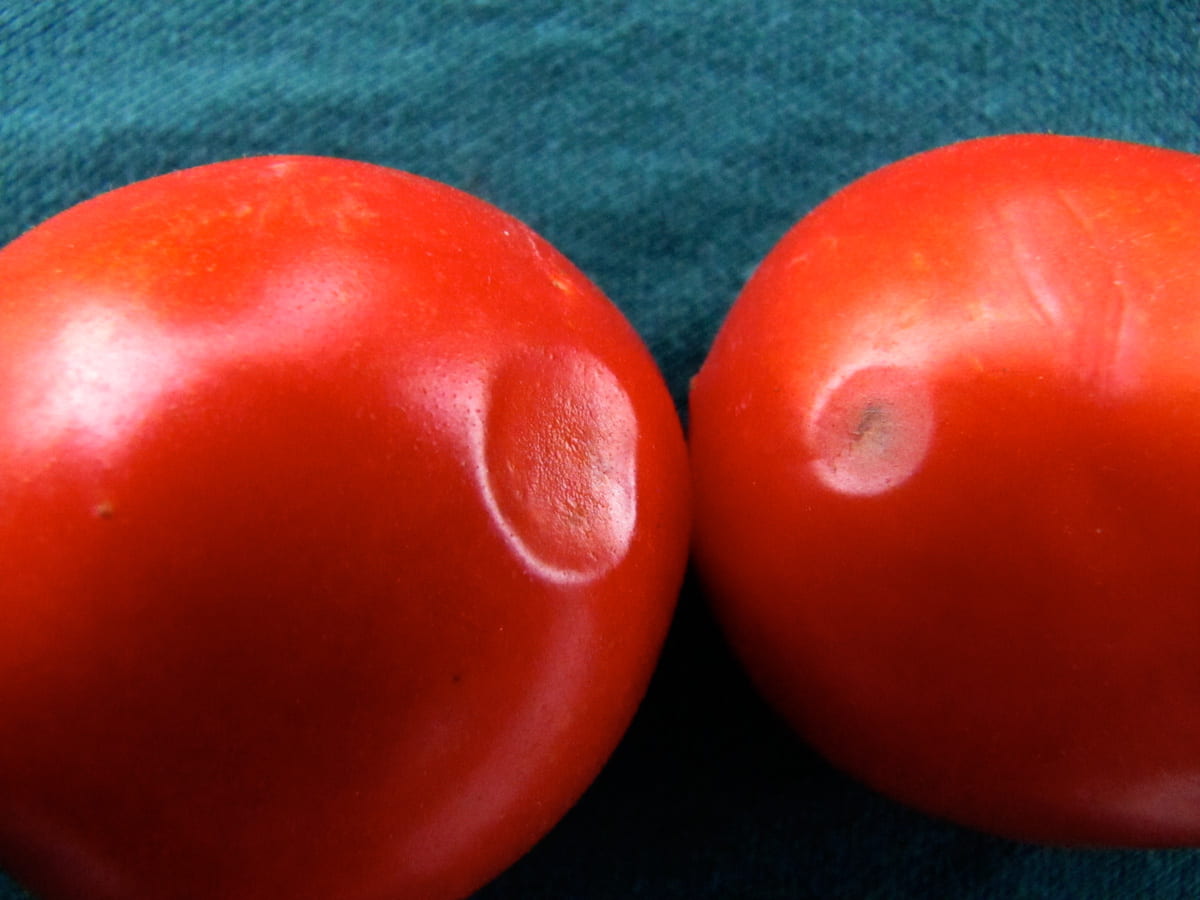
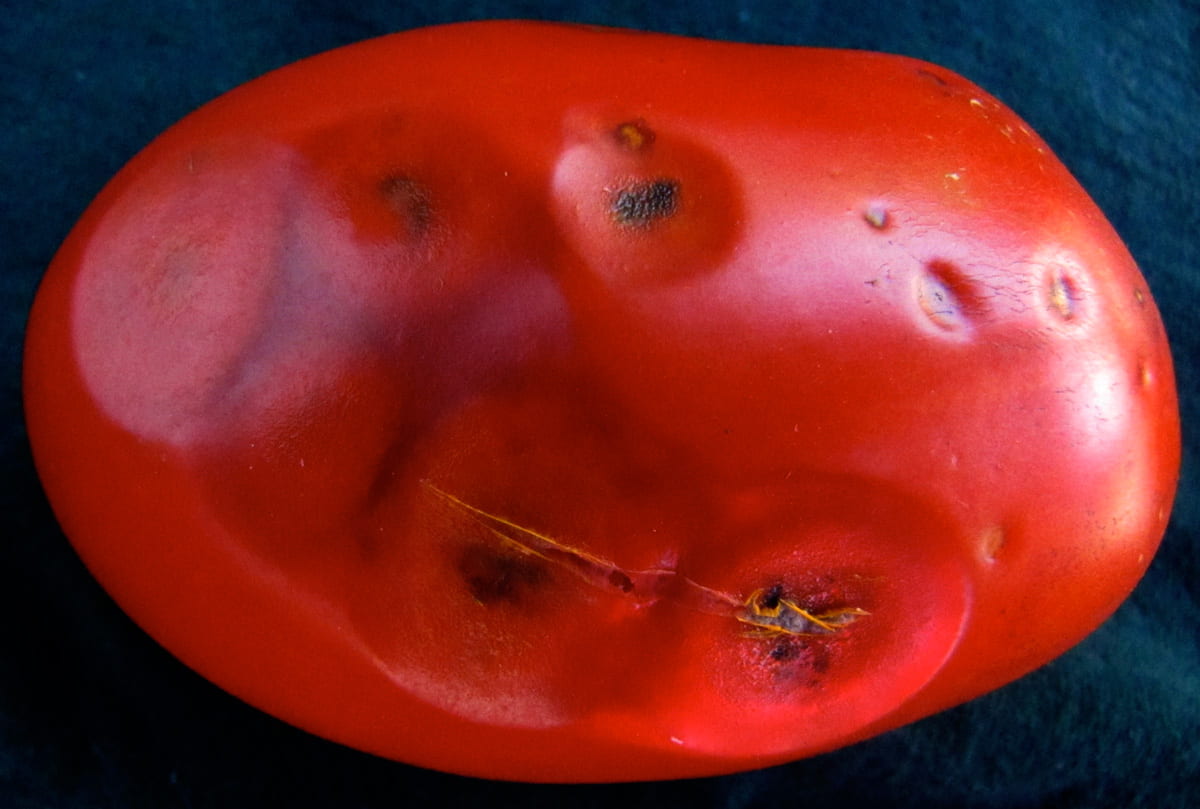
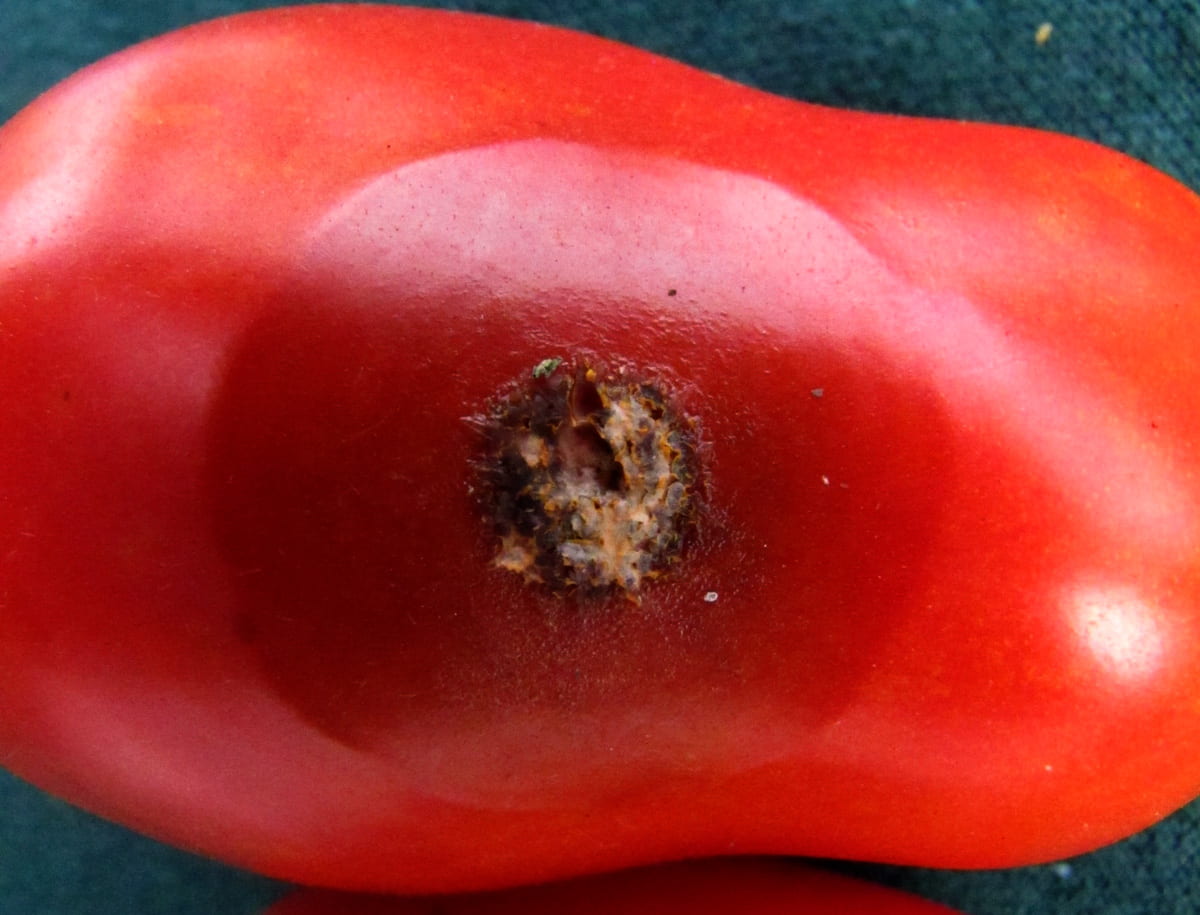
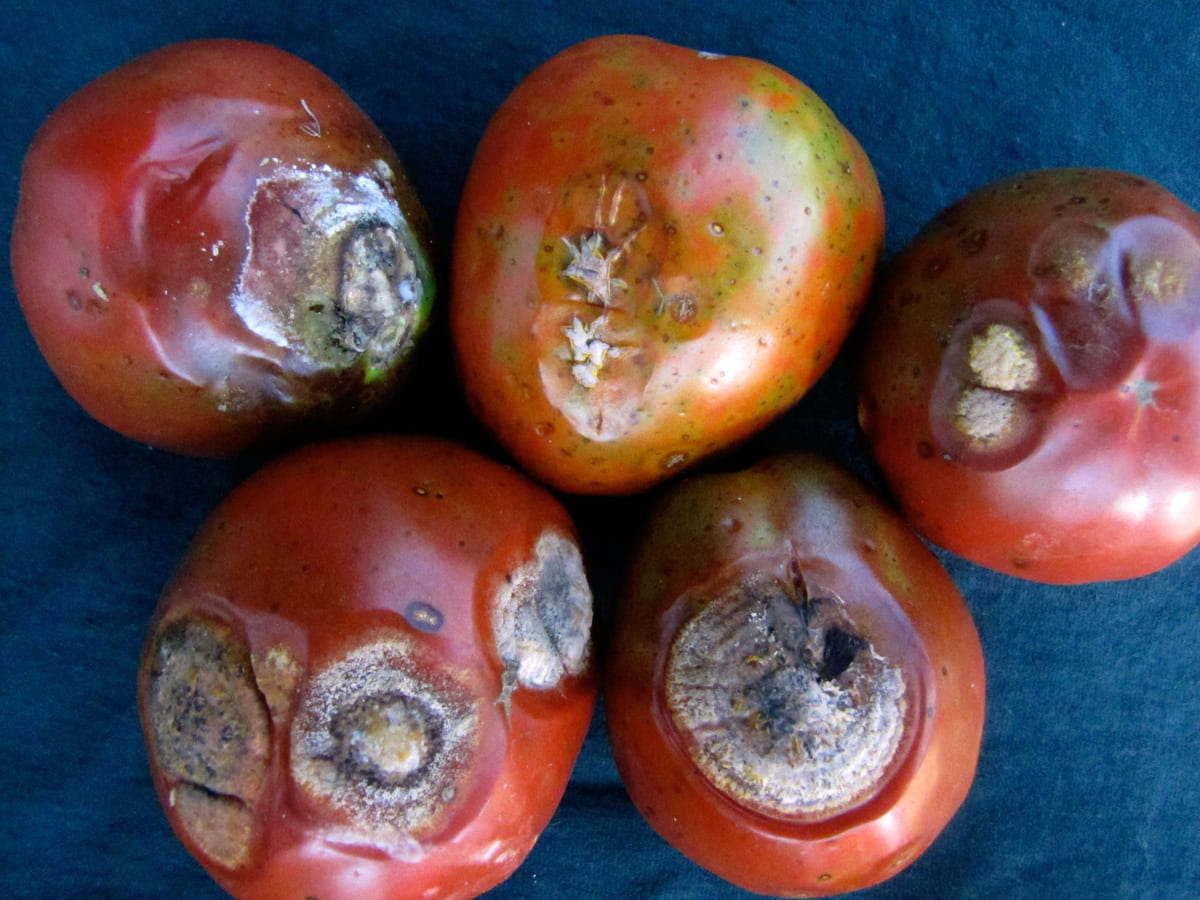
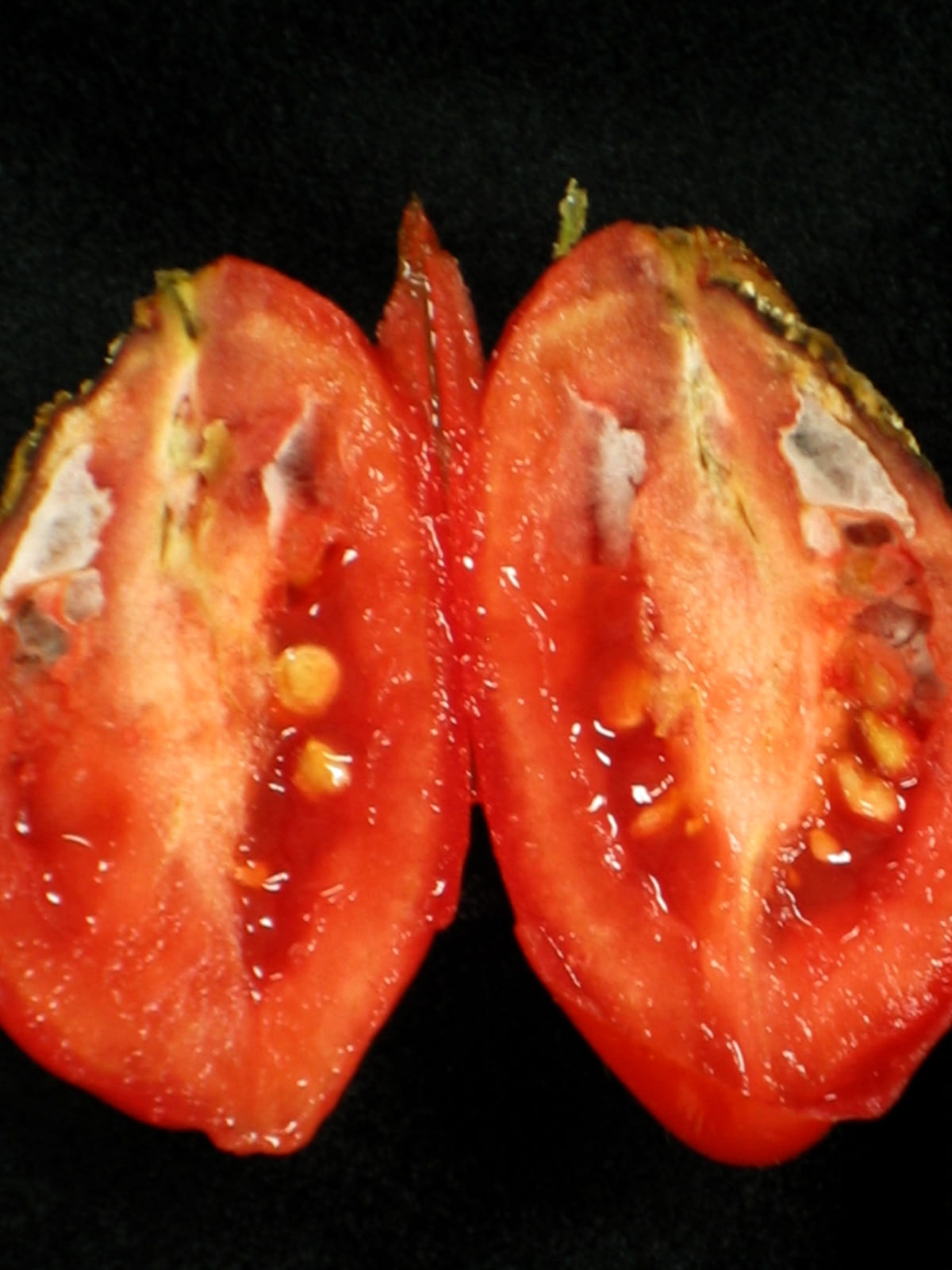
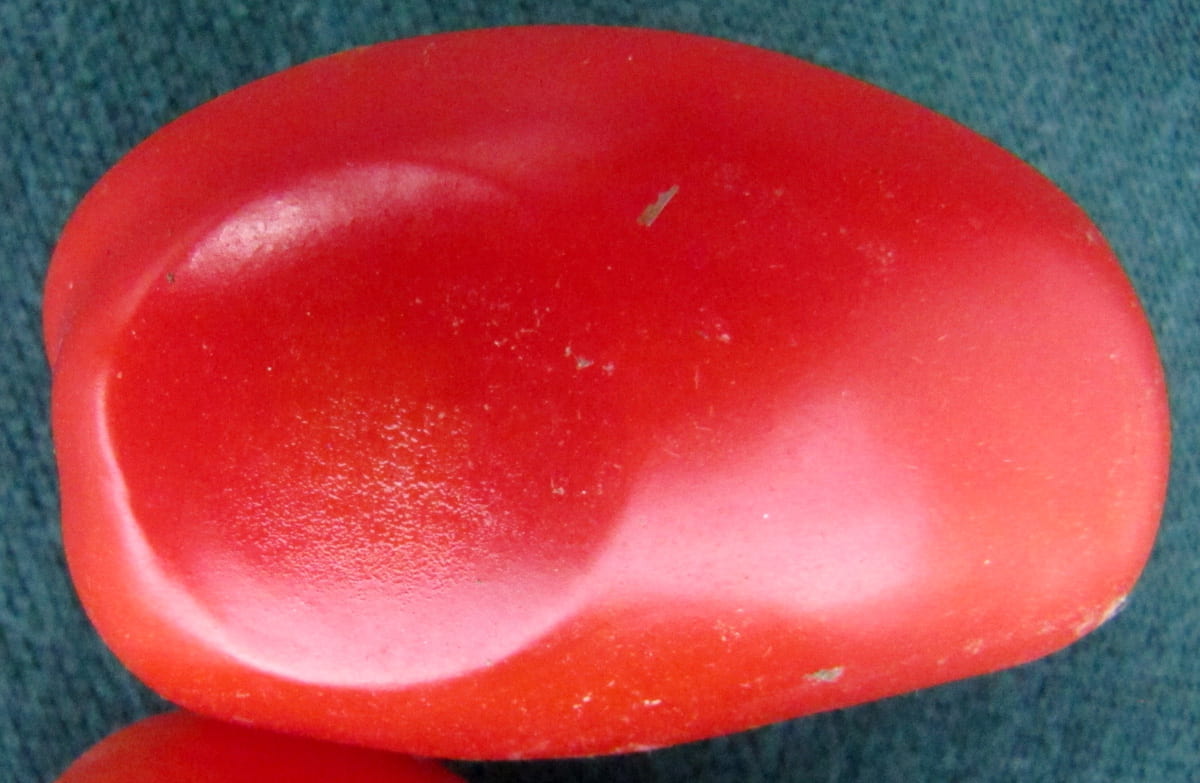


Is there an organic spray or fungicide that will reduce this?
Meg McGrath responds:
There are a few organic fungicides labeled for this use. I have added a list of currently labeled products above on this page. Almost all organic fungicides are biopesticides. You can find labeled biopesticides for any disease for most vegetables by searching the disease name in the lists on our Cornell Vegetables Biopesticides page: https://www.vegetables.cornell.edu/ipm/diseases/biopesticides/